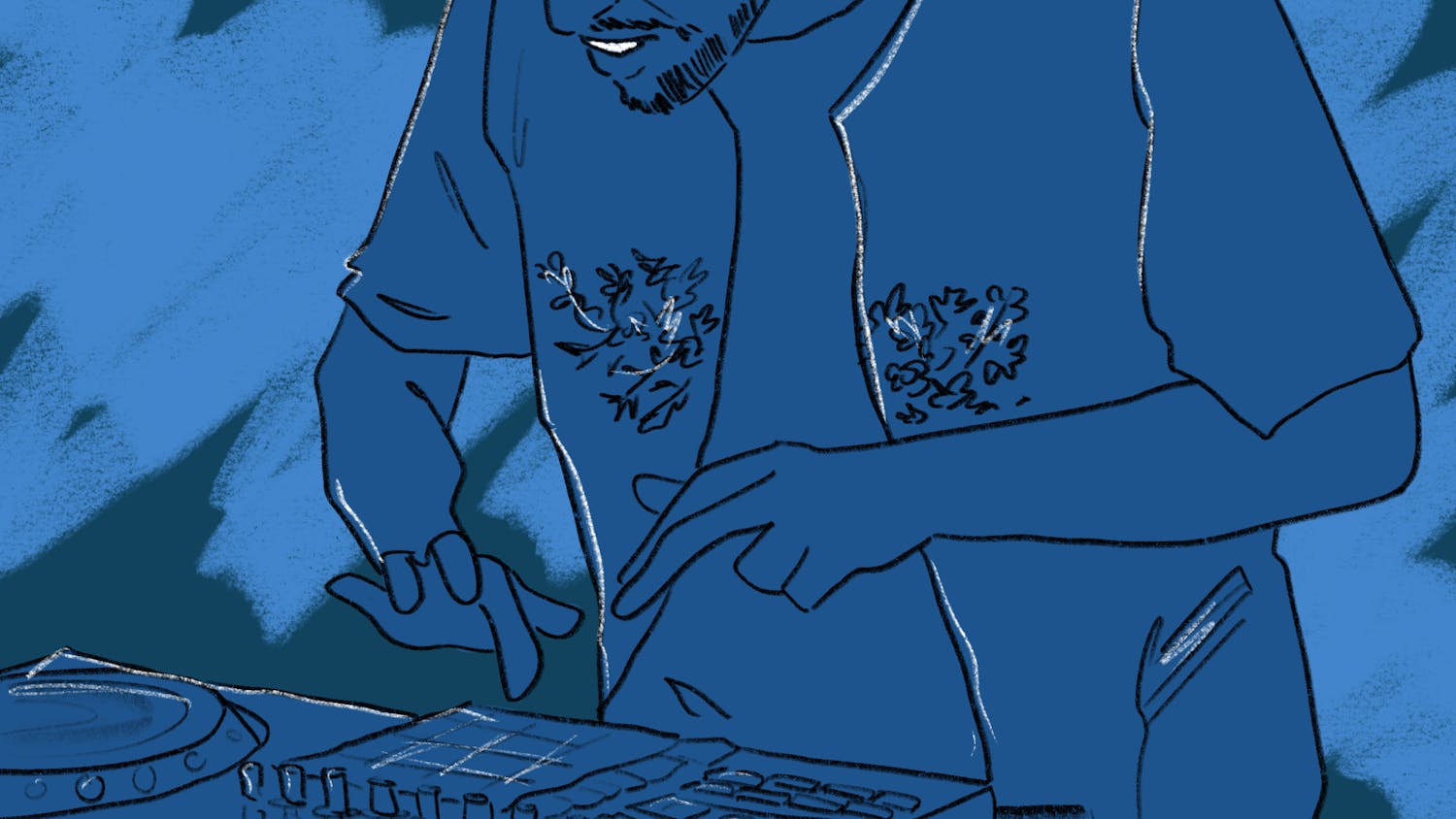Tucked between the Black Family Visual Arts Center and the Hopkins Center, the Maffei Arts Plaza was once nothing more than a parking lot and Brewster Hall, a residential space that housed international students. The space is now a hub of public art, where some of the most prestigious art at Dartmouth is displayed. While the College has said farewell to Louise Bourgeois’s “Crouching Spider” and the five Allan Houser sculptures now on display will also leave in May 2015, the plaza maintains one permanent work of art: Ellsworth Kelly’s “Dartmouth Panels.” Five brightly colored, aluminum rectangles will continue to hold their place along the outside wall of Spaulding Auditorium, watching over the plaza as the other works continue to change.
Kelly’s beginnings as an artist and the events that inspired his works are the subject of “Ellsworth Kelly: Fragments” (2007), a documentary by Checkerboard Film Foundation that the Hood Museum of Art will screen Thursday. Hood director Michael Taylor will introduce the documentary and guide the spotlight tour of Kelly’s panels after the screening. The film, he said, will explore the artist’s “subdued style,” referencing Kelly’s focus on things like the reflection of light in a window, unlike the more visceral subjects of his contemporaries.
“Fragments” is a part of the Hood’s “Art and a Movie” program, and marks what the museum hopes will be the first in a series of several documentaries on the public art on Dartmouth’s campus, said Sharon Reed, the Hood’s programs and events coordinator.
“It’s a great way of providing more in-depth information about artists in a visual form, outside of a lecture or gallery tour,” she said. “Seeing the artist’s life is a way to learn about where he’s coming from in his work.”
The profile of Kelly will be helpful for understanding the nuance in the artist’s work, Taylor said, acknowledging that the abstract elements of Kelly’s pieces can often leave viewers unsure the artist’s message or motivation.
“[Kelly] is one of the most important artists alive today, but he’s not a traditional landscape artist by any means,” he said. “You have to bring a lot to the table in terms of context and the history of art, but this film can give viewers that context.”
The film will focus heavily on Kelly’s time in Paris, where he lived as a young man in the years after World War II and taught arts at the French embassy.
“Fragments” will explore some of Kelly’s earliest influences and how these same images of Paris would become cornerstones that would echo throughout his years of artwork. After watching the documentary, Taylor said, audiences can understand how Kelly arrived at the signature style for which he’s widely recognized.
“In Paris in the 1950s, the art world was dominated by abstract expressionism, which Ellsworth found to be sort of macho and heroic for him,” he said. “He found a way of continuing the legacy of Mondrian and Matisse but not in the visceral, gestural, throwing the paint at a canvas sort of way.”
The importance of understanding the artist behind the work was echoed by Jinny Seo ’16, a studio art major.
“Art is a form of communication, and you have to know the context to really understand what the artist is trying to express,” she said. “Art reflects so much upon the culture and time that it was made in, and it’s surprising how much more you will understand a piece of art when you learn the history behind it.”
Corrine Romano ’15, a studio art major, said that Kelly’s subdued style is apparent in the Spaulding panels. She said that her first impressions of the panels were that they were simple colored panels, but the works have a complex side, too.
“These panels will never fade, and that kind of thing is an entirely new level for art,” she said. “There’s an inevitable deterioration and degradation of every art piece over time, but for a piece to be able to stay the same is incredible.”
Taylor said that after watching the documentary and understanding the process of Ellsworth Kelly’s artistic development, it would make every viewer look at the panels in a new way. This was reiterated by Jenny Seong ’16, a studio art major, who said the panels can be difficult to understand because of their minimalism.
“There’s so little information in the actual piece — it’s just five panels and it can be hard to know what to do with that,” she said. “This is one of the pieces that requires some information in order to really understand it.”
As the museum moves forward, Reed says the Hood hopes the museum can continue to spark conversation about the artwork visible on campus with their documentaries.
While the “Art and a Movie” series does not run on a set schedule, she said the Hood is constantly looking for film sthat resonate with the art on campus.
“We want the films we show to really be connected to the collections and artwork we’re showing on campus,” she said. “Attendance has been strong, and the audiences seem to enjoy putting the artwork they see into the context of the artist’s life.”
Romano shared the enthusiasm for Kelly’s work, saying that the addition of public art on campus and the conversations around the art add something the campus was previously missing.
“As weird as the art is sometimes, just the fact that we’re able to have it brings such a different flash of character on campus,” she said. “Now that we’re putting art on campus, it’s no longer just a college in the middle of the woods.”
“Ellsworth Kelly: Fragments” can be seen Thursday at the Hood Museum of Art Auditorium at 6:00 p.m. A tour of the panels in the Maffei Plaza will follow.



